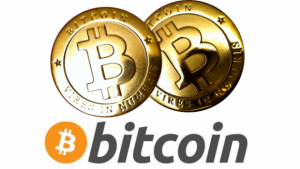Cryptocurrencies Reward the Production and Deployment of Resources
It’s taken for granted that most space colonies won’t be worried about trade for quite a while yet. They’ll be doing good if they planned ahead and checked everything off that list of what they’ll need to have a sporting chance of actually surviving long-term in a hostile environment. When there was still uncharted dry land on Earth, how many exploration missions have failed because the expedition remembered to bring the fine china but forgot to bring tools that would have helped them live off the land? Probably more than we read about in history textbooks simply because they did not return to tell their tales. The future history of space colonization will be similarly littered with expeditions and entire colonies that failed because they didn’t plan adequately. That’s why I like to say that Mars is a lot more fair than most Earth-based societies. The Martian environment might seem unfriendly, but at least it doesn’t care about who you are, where you came from, or why you and your pals are on Mars. It just cares about whether you’re ready for this.
The same goes for cryptocurrencies, really. To get the full use out of them, you just need to answer a few rudimentary questions that have nothing to do with your individual identity. Can you use a cheap mobile device and download a wallet using the nearest Wi-Fi connection or carry a piece of paper in your pocket? Can you copy and paste a string of numbers and letters or scan a QR code? Are you at all interested in buying and selling on the open market and transacting with people you will never meet in real life with no third party getting in the way? Are you ready for an economic system where banks might be regarded as, “Not absolutely necessary, but we could put it in a corner if we have the room,” rather than, “Essential for participating in transactions between distant entities that may be separated by international borders”?
From the perspective of a future space colony in an era where the wild frontier is beginning to settle down and colonies are beginning to think about trade, the answer to all of these questions would ideally be, “Yes.” They may be producing surplus resources that they can sell on the open market by this point. They may also have some extra computing power and storage that they haven’t really been using much. These could be used to jump-start the earning of cryptocurrencies and a streamlined path to a decentralized network in which very few colonies will be completely left out of the interplanetary economy if they are willing and able to produce resources that can be placed on the open market.
The important thing is to keep the network lubricated. Owners of mining rigs turn them off when it becomes more expensive than it’s worth to run them. For this reason, many Blockchain developers like the Ethereum team make use of a digital token called an appcoin to lubricate the network every time data is added. The appcoin changes hands every time somebody uses Ethereum’s toolbox. Ether was never really meant to be just one more cryptocurrency that can be pumped and dumped by investors. It was meant as a way to create incentives to help the network run more smoothly.
It’s All About The Algorithm You Use
A Quick Peek at What Algorithms Are
I’ve mentioned the fact that Bitcoin runs on processing power. These days, Bitcoin is regarded as the least efficient cryptocurrency. Satoshi Nakamoto deliberately chose to make it inefficient by using SHA-256 cryptography because he, she or they recognized that there is usually a trade-off between having an efficient system and maximizing system security. It really doesn’t do much good to have the first true cryptocurrency if it can be successfully attacked using a typical laptop.
The SHA-256 algorithm that Bitcoin uses created an entire class of cryptocurrencies called the Proof-of-Work (PoW) cryptocurrencies. These are the cryptocurrencies that rely on processing power to confirm transactions and generate new blocks. Mining rigs that lend work in the form of processing power to each respective PoW currency’s network can be rewarded with newly generated currency and mining fees. Most altcoins that make use of SHA-256 are effectively clones of Bitcoin that have been given a new brand and possibly a few additional or upgraded features.
Other cryptocurrencies in this class make use of newer algorithms, such as Litecoin’s less resource-extensive Scrypt. (Some sources indicate that a nearly forgotten cryptocurrency called Tenebrix was the first to use Scrypt. Litecoin merely co-opted it and went on to become the second most popular cryptocurrency while Tenebrix tanked.) Monero uses an algorithm known as CryptoNight, which is designed to be resistant to dominance by both ASICS and machines with fast memory-on-chip systems and give participants an equal right to vote on which transactions will be relayed next. DASH makes use of the X11 system, which uses 11 cryptographic hashing algorithms designed for a more fair distribution of currency. Groestlcoin was the debut of the hashing algorithm known as Grøstl, which claims to be highly efficient in terms of the amount of energy used to mine it. Any of these cryptocurrencies can theoretically be maintained by colonies that are willing to contribute any unused processing power to their respective networks and these colonies can receive rewards in the form of new currency and mining fees from the transactions they process.
The obvious benefit of a PoW currency is that it can reward the production and deployment of new resources, especially processing power. If you’re a member of a growing colony that can afford to invest in the processing power needed to run a node, you’re in the good. However, the obvious disadvantage of PoW from the perspective of a small or average-sized colony is that it’s vulnerable to what’s called a 51% attack in which somebody controls the majority of the processing power being used to maintain the network. In an ideal situation, one node would always equal one vote that is regarded as equal to every other vote, but an especially large colony or an entire planet like Earth could invest in enough processing power to skew the system in its favor. This would effectively give the votes made by larger colonies and planets like Earth more clout. As Leemon Baird, CEO of the Blockchain-as-a-Service startup Swirlds, put it:
“”Proof-of-work” means that the node must use an expensive supercomputer to participate. If a colony or station is barely surviving, they won’t want to buy and run supercomputers just to keep a cryptocurrency going.”
So a smaller colony will not want to use a PoW currency because this would inevitably lead to the economic equivalent of an arms race that larger powers would win. PoW would inevitably skew the system in favor of larger and better developed colonies as well as planets like Earth that can afford to sink resources into processing power.
Proof-of-Stake (PoS) cryptocurrencies work by rewarding the ownership of a share of the available currency in a particular cryptocurrency network. This type of cryptocurrency often starts out using the PoW model for the sake of generating the first few blocks and then switches over to PoS so that entities that already own a stake in that cryptocurrency can effectively earn interest.
PoS currencies may work better than PoW for creating incentives to jump-start interplanetary trade. Earn a stake in a particular currency by selling surplus fertilizer to nearby colonies and your colony stands a chance of earning interest on that stake. Just be ready for some lively negotiation because buyers will want to get the best price possible so they don’t have to give up so much of their stake. If there’s a negative to PoS cryptocurrencies, that negative is similar to PoW in the sense that larger colonies and planets can sell more surplus resources and earn a higher stake, therefore earning more interest than small colonies.
Solarcoin is one of only a handful of cryptocurrencies that rewards the actual production of resources rather than their deployment or sale. Call it Proof-of-Production, if you like. One Solarcoin equals one MWh of solar energy generation and the foundation has enough Solarcoin to reward 97,500 TWh of solar power production. At this time, Solarcoins are allocated from a non-circulating generator pool account – essentially a pool that represents solar power that has not been generated yet. The assumption here is that colonies will either use or sell what they can produce. If a future interplanetary Solarcoin network can establish that a colony is producing solar power, that colony may still be a viable one that uses that power and can spend the Solarcoin if its members wish to.
Storj may have finally invented a way to create incentives for actually hosting nodes without needing to invest in processing power: Proof-of-Retrievability (PoR). With a PoR system, colonies would be providing storage space instead of processing power. Nodes could still relay and confirm transaction data along with agreeing among themselves on the order of transactions and which data is actually valid, but won’t need expensive supercomputers to do it.

As of June 2016, the Bitcoin Blockchain is approaching eight gigabytes in size. This might not sound like a lot when you could buy an eight terabyte external hard drive for between $250 and $350 depending on brand and model, but future space colonies aren’t going to be paying the shipping costs of having hard drives delivered to their colony unless there’s some kind of practical payoff and finding a good third-party cloud service provider that owns centralized data warehouses on Earth may not be an option when they need real-time data. This means that they may not want to reserve storage space for a full node unless they can get a cryptocurrency network to effectively pay its rent for storage space along with paying for flops. If a cryptocurrency can make use of a PoR algorithm, it can reward colonies for running full nodes in a way that makes the data on those nodes easy to retrieve by the rest of the network with the only limit being the speed of light.
There may be several ways for the Blockchain to reward the production, use and/or sale of resources that experts haven’t invented yet. Some of them may move away from the strict cryptocurrency model that rewards resources and ownership of currency with the generation of more currency. One could pretty much call the Ethereum Smart Contract model Proof-of-Fulfillment because the parties of any particular contract won’t receive, or at least won’t keep, the promised rewards unless they keep up their end of the deal. These models will do for starters, though, because they meet the entire purpose of having a medium of exchange in the first place: rewarding contributions to an economic system that is hungry for resources that colonies can create and make available for use now (or at least the “now” that will exist when interplanetary trade becomes a real thing) with the chance to obtain future resources that other colonies create and make available on the open market.










